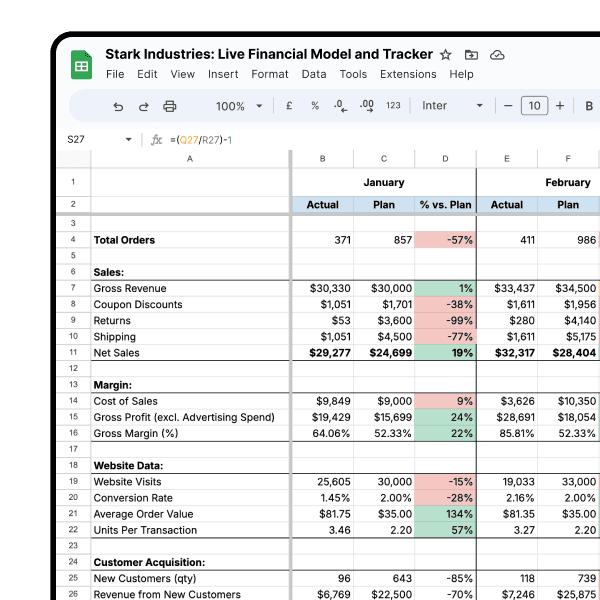Best Practices
29.04.2022
TLDR
BeardBrand, a beardcare brand founded in 2012 and launched on Shopify in 2013, has achieved significant success through content-driven strategies. They began as a blog, Urban Beardsman, using SEO and content mapping to engage users at various stages of the buyer's journey. Their structured email marketing led to an effective cart recovery sequence, resulting in high user retention. BeardBrand also collects its own customer data, reducing reliance on third-party platforms in anticipation of evolving data privacy regulations. Their content and data-centric approach, emphasizing organic growth via email marketing and user trust, has been instrumental in their success.
Founded in 2012 and launched on Shopify in 2013, BeardBrand was Eric Bandholz’s solution to the stigma against beards in the workplace.
His beardcare line began as a hobby blog with about 300 readers. When the New York Times asked to quote him in an article about beards, Bandholz saw the opportunity to monetize his blog. With just one vendor onboard, Bandholz used the article for leverage and launched his online store with their products the day before it went live.
Less than a year later, they were bringing in $120k in monthly sales. The site is renowned for its content and branding strategy, bringing in 1.4 million total site visits. Bandholz is an advocate for bootstrapping, and uses finesse rather than finance to garner an impressive 68.84% organic traffic on the site.
Here are three of the content and data focused strategies that contribute to BeardBrand’s success.
Use content mapping to attract users at relevant points in the buyer's journey
BeardBrand started as a blog, so they do not struggle when it comes to content mapping and branding. This essentially means they use SEO and keywords to introduce consumers to products that are relevant to them wherever they may be on their road to purchasing a product. Many marketers recognize three main stages in the buyer’s journey.

The name of the blog itself, Urban Beardsman, is integrated into the company’s strategy. While the BeardBrand product page accounts for 45.25% of the site’s overall traffic, the second and third most visited pages on the site are the blog. Directing to the same page from two different links, the blog accounts for a combined 34.14% of the site’s total traffic.

Here’s how BeardBrand uses their blog to intercept consumers at each of the three stages.
Awareness Stage
During the awareness stage, the user query is typically very broad. For BeardBrand’s target market, users at this stage are searching things like, “how to grow a beard,” “beard growth,” or some variation.
Here BeardBrand’s strategy is to familiarize their target audience with the brand by optimizing their blog content to become compatible with popular search phrases and keywords. They hold the top position for the following queries:
“how to grow a beard”
“beard growth”
“growing beard”
“beard growing”
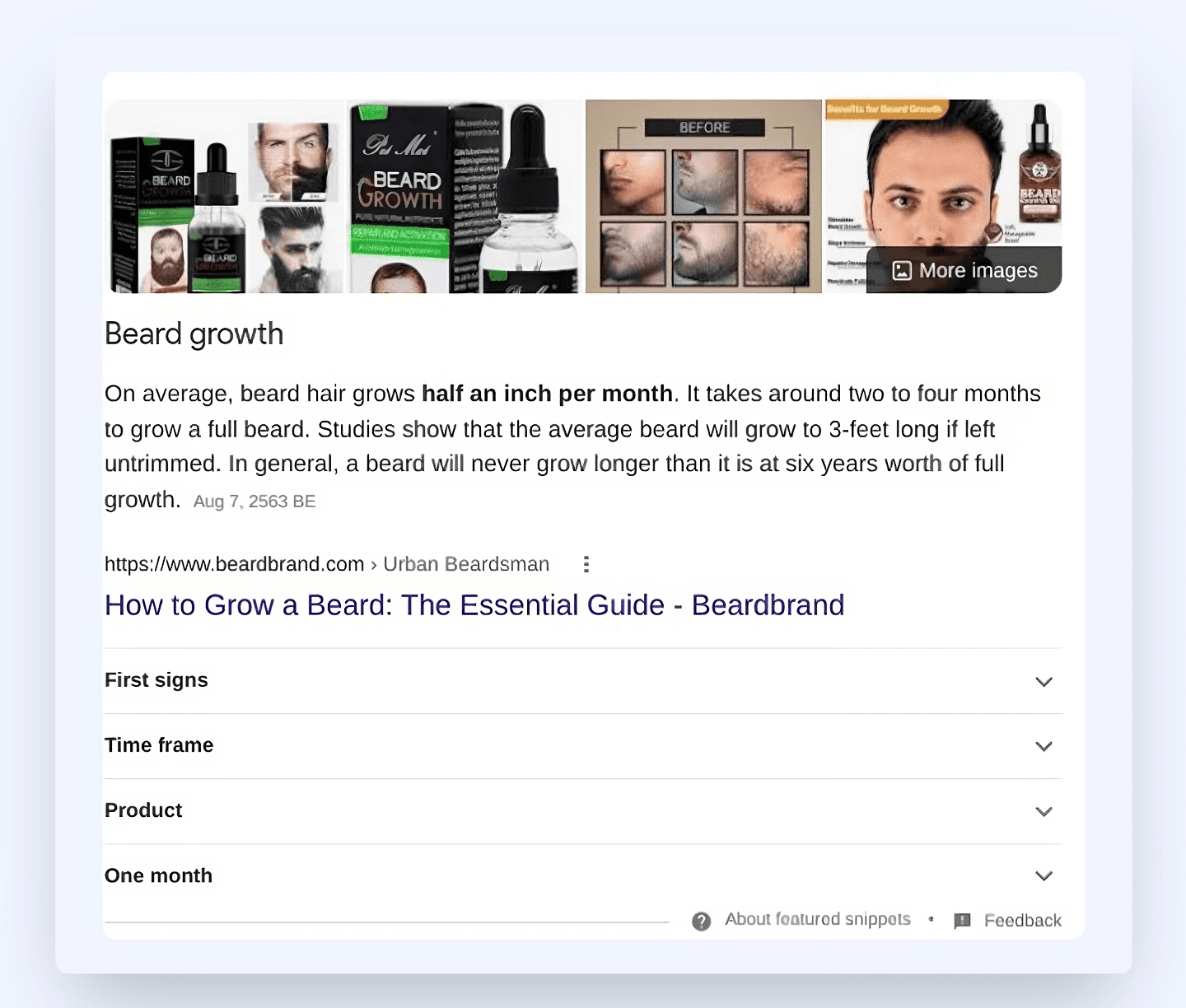
The majority of these keywords direct users to BeardBrand’s 2020 blog post, “How to Grow a Beard: The Essential Guide" This popular post highlights how BeardBrand is effectively able to market themselves as a problem-solving and educational company. This content has been optimized to answer general user queries that present their product as a solution to a problem that the user didn’t even know they had.
Consideration Stage
At this stage, user queries reflect that the consumer is searching for a product with intention, but is still researching different options or learning more about the relevant market.
BeardBrand’s strategy at this stage is to present informational blog posts that may answer the popular questions such as, “how to choose the best beard comb.”
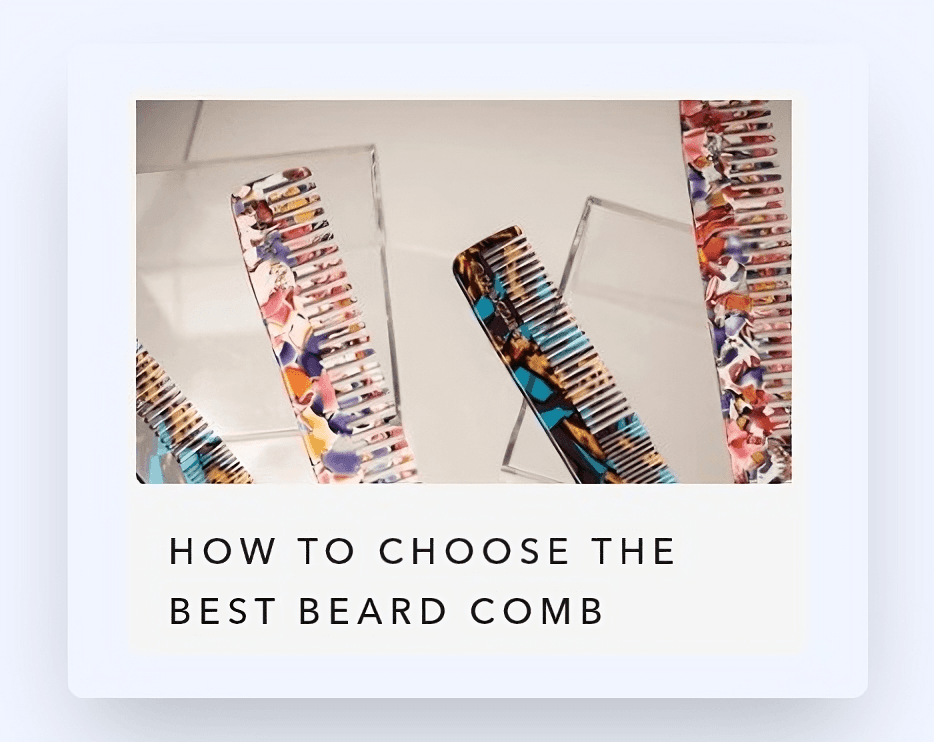
These strategically named articles entice new users and boost brand awareness. Ranking under 3,329 keywords in the beard community, BeardBrand uses informational content to position them as a trustworthy source to potential consumers.
Decision Stage
As the user nears the end of the buyer’s journey, they know what they want but don’t know where to get it. This is where queries get more specific. For BeardBrand, they key organic search phrases include beard oil and beard balm - two of their most popular product lines.
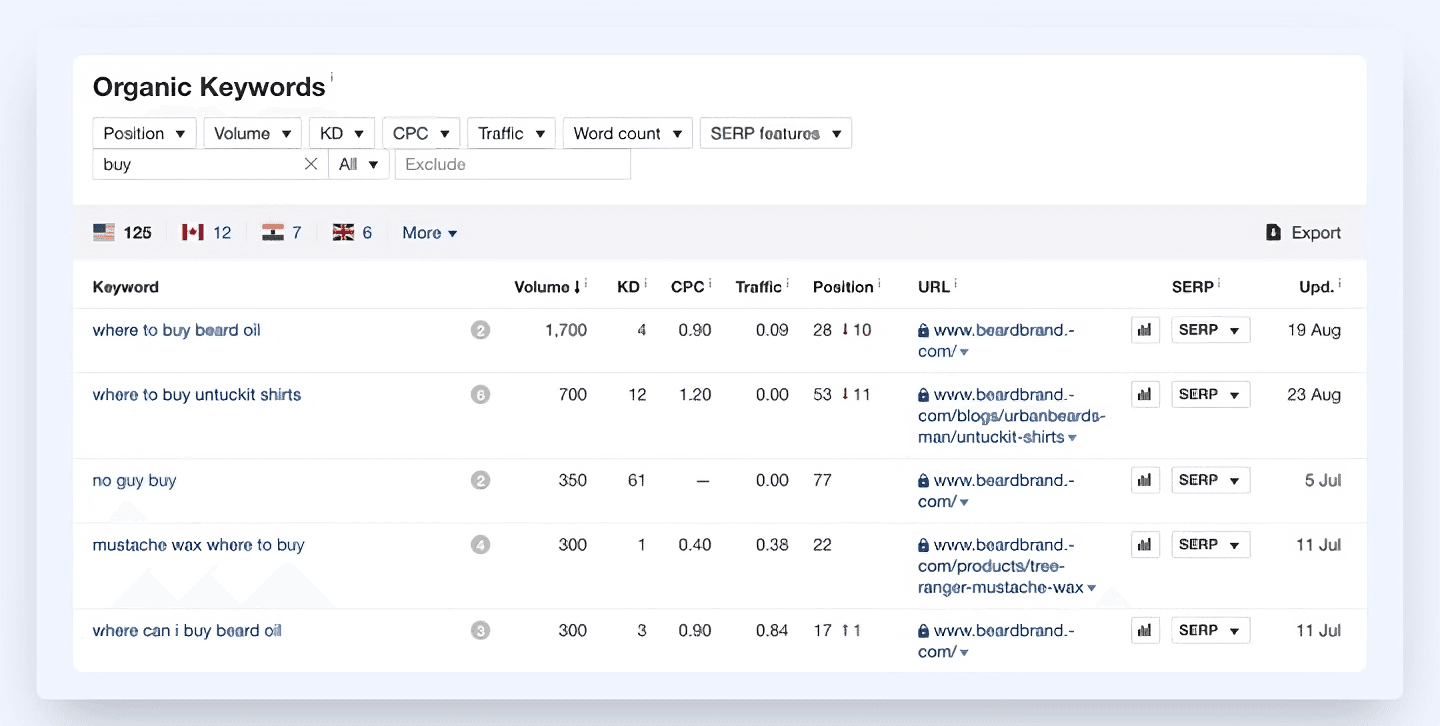
By the time the user reaches this final stage of the buyer’s journey and they are ready to make a decision, Beardbrand’s strategically named articles drive organic traffic (including the above organic keywords) directly to their site and products.
Build strategic email flows to drive user engagement and brand trust
Back in 2013 during their first year on Shopify, BeardBrand drew in $120k in monthly sales, and grew their email list to 7, 000 subscribers leveraging off their exposure in the New York Times. While some of this success can be attributed to good copy, BeardBrand’s unique email marketing strategy has won them users. Specifically, their onboarding flow, order confirmation email and cart recovery sequence earn them user retention.
Rather than sending out a traditional flow of onboarding emails to new users, BeardBrand has a highly structured 10-day Bootcamp that is sent to new users. This flow introduces users to products that are tailored based on which content they have already been exposed to. This bootcamp converts around 9% of new users into customers - the average welcome sequence only converts around 2.7%.
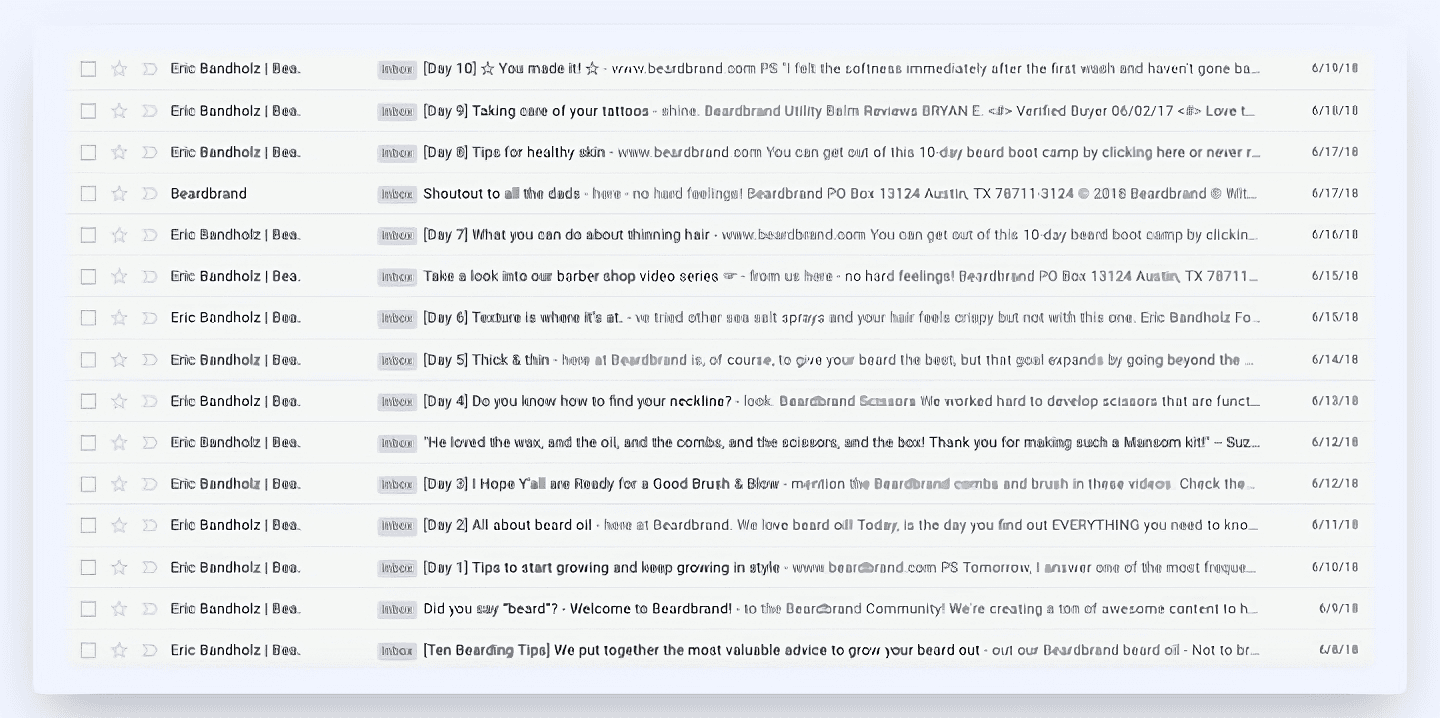
Interestingly, their order confirmation email accounts for a large chunk of orders totalling in around $4,000 a month. In spite of the email having a relatively low open rate of 64%, BeardBrand finds it effective to constantly direct consumers back to the site using products they may be interested in.
In terms of email flow content, BeardBrand leverages personalization and consistency over all. Their three step Cart Recovery flow has improved their cart recovery rate from 7% to 16.5% after a single email. The sequence goes as follows:
A plain-text, personal email from the BeardBrand team
One day after the user has abandoned their cart, the user is reminded that their cart will expire
Finally, a plain text email from Bandholz for a final push
After introducing this sequence, BeardBrand’s recovered revenue increased by 235%.
Now bringing in $3.22 million in annual sales, BeardBrand’s focus remains on generating sales organically through email marketing rather than ad campaigns or promotions.
Improve your DTC game. Sign up for weekly tips.
Collect your own data on customers; don't rely on third party platforms
Rather than relying on third party platforms, Beardbrand collects their own data directly from consumers. With Google’s plan to ban third-party data by 2023, BeardBrand is ahead of the curve and already repositioning to rely less on cookies.
The ban by Google would disallow third party cookies (as in websites other than the ones users are visiting) from collecting user data for later use by the third party. Other search engines like Firefox, Safari and Brave already block third-party cookies. With over 3.2 million users, Google Chrome’s ban will have a significant impact on business’ ability to collected and analyze data from third party cookies.
As this feature is typically used by ad platforms to track user behaviour across multiple platforms to better target audiences, businesses investing a lot in targeted ads or campaigns will take a hit. GetApp claims that 44% of marketers believe they will need to increase their spending by 5% - 25% in order to compensate.
Using interactive elements, a live messenger and sticky sections, Bandholz’s website is designed to leverage zero party data. This is data that is shared directly between the consumer and a business. This type of data is best collected by interactive elements that prompt users to share information about their interests or preferences.
BeardBrand drives zero party data by including an onboarding quiz on their landing page.
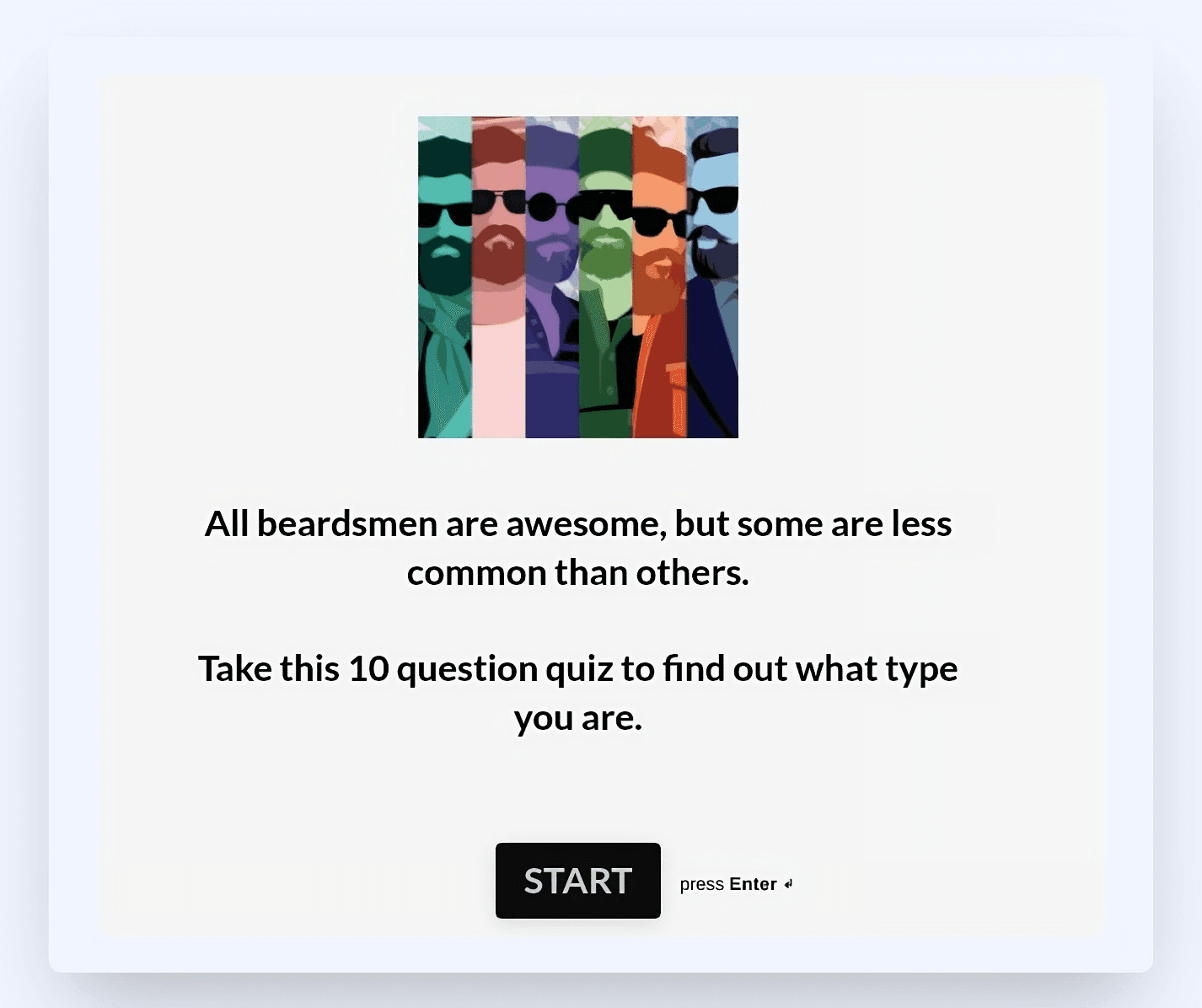
The quiz is only 10 questions, but extracts valuable zero party data from users. The user is then prompted to give their email before being directed to a page that tells them which kind of Beardsman they are.
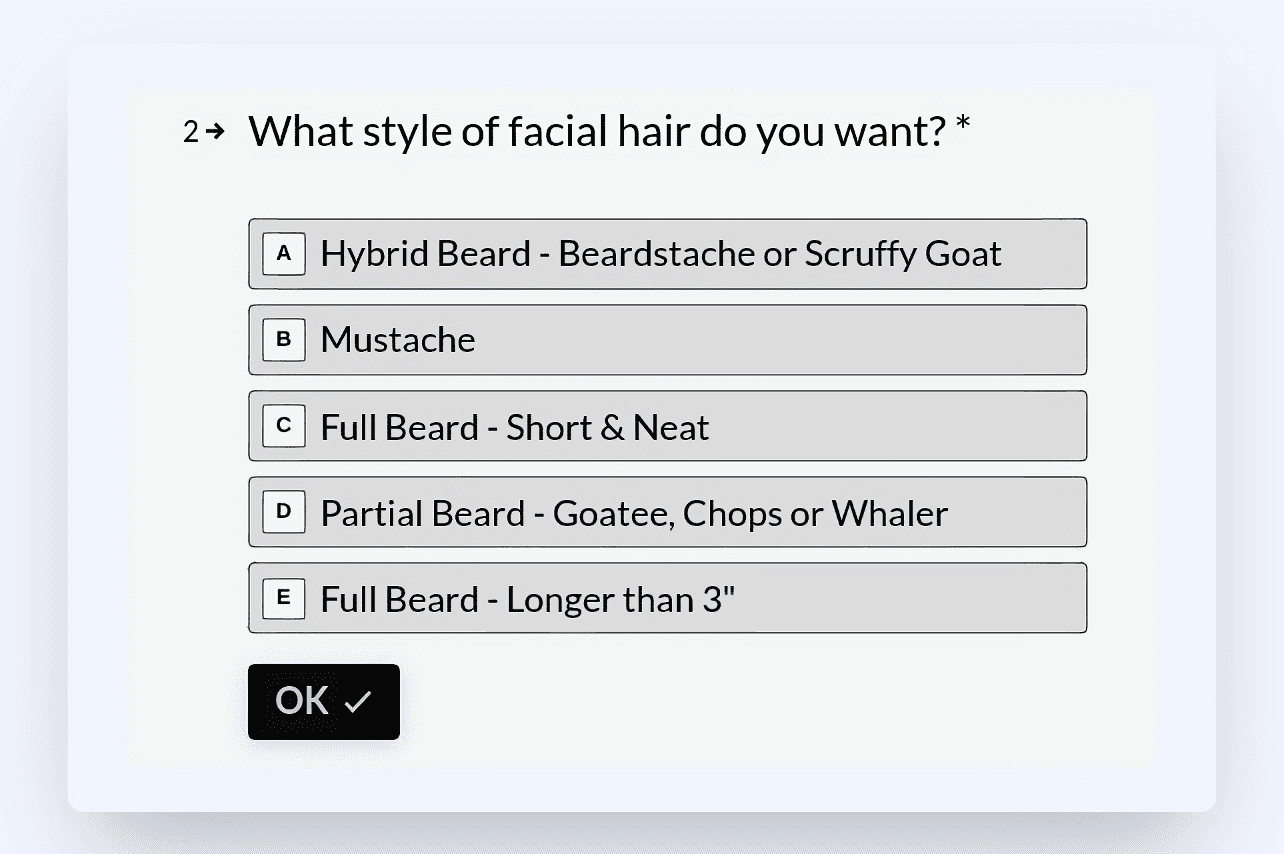
The above questions provide the brand with zero party data that gives the company insight into the interests and concerns of their users, and also directs them to their most relevant products. There are six Beardsmen in total, each of which undoubtedly represents a key demographic for BeardBrand. The products, content and aesthetics that the site presents you change based upon the results of this quiz.
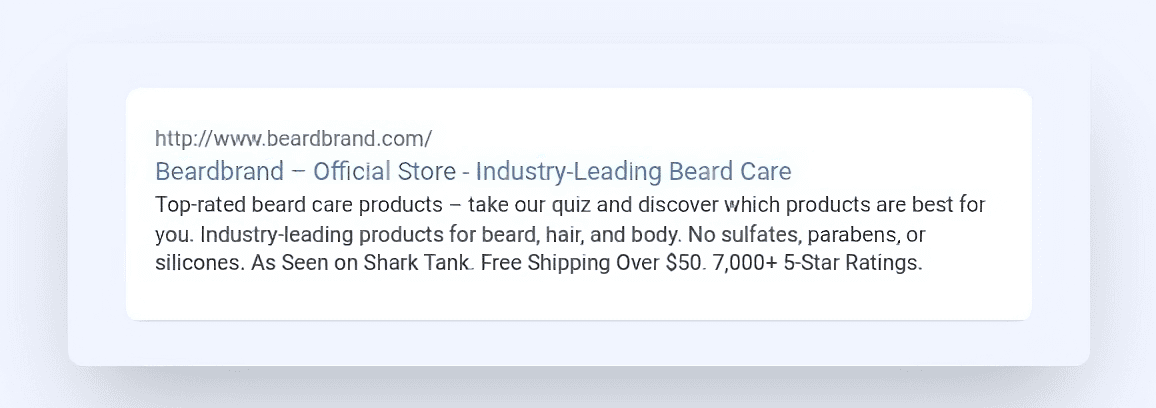
Beardbrand directs customers to the quiz wherever possible. Pictured above is their top performing search ad which almost immediately encourages users to take the quiz.
Built upon a foundation of strong content and bolstered by Bandholz’s keen eye for marketing and content strategy, BeardBrand has become a major player in the beardcare industry. By using content mapping to present their product as problem-solving, BeardBrand built brand awareness and community engagement that was strengthened by their meticulous email flows. Using their brand to build user trust enables them access to a well of zero-party data.
